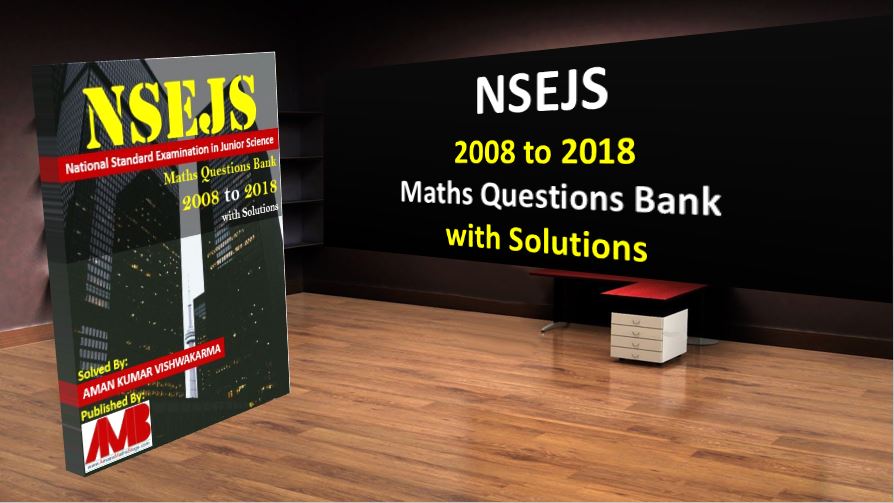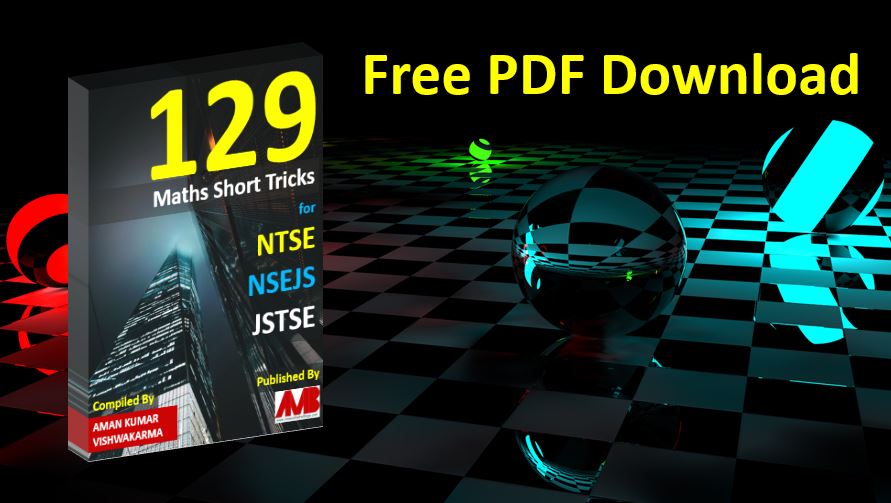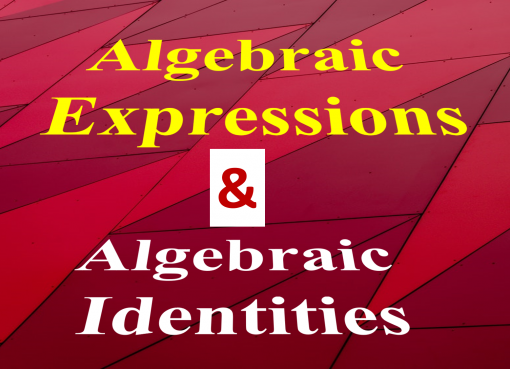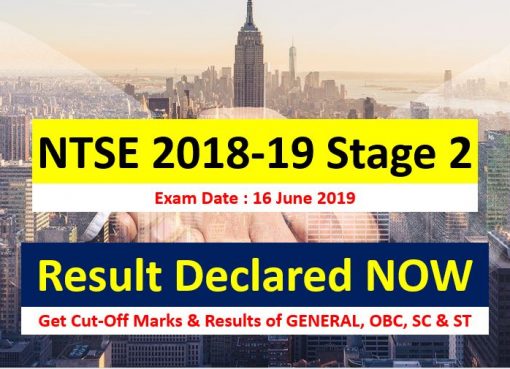NSEJS 2016-17 Question Paper With Answer Keys And Solutions
Hi students, welcome to AmansMathsBlogs (AMB). On this article, you will get NSEJS 2016-17 Question Paper With Answer Keys And Solutions.
NSEJS 2016-17 is an IJSO Stage 1 exam that is conducted by IAPT (Indian Association of Physics Teacher). In 2016-17 session, NSEJS is conducted on 20 November 2016 (Sunday).
NSEJS Maths Questions Bank EBook
Get NSEJS 2008 to 2018 Maths Questions Bank with Solutions. To get this combo ebook, click below RED button.
| NSEJS | |||||||
|---|---|---|---|---|---|---|---|
| Previous Year Question Papers | |||||||
| 2008-09 | 2009-10 | 2010-11 | 2011-12 | 2012-13 | |||
| 2013-14 | 2014-15 | 2015-16 | 2016-17 | 2017-18 | |||
| 2018-19 | 2019-20 | ||||||
Get File: Free PDF of 129 Maths Short Tricks (Click On Image)
NSEJS 2016-17 Question Paper: Ques No 1
Two bodies A and B are charged with equal magnitude of charge but A with positive charge and B with negative. If MA and MB are masses before charging and MA‘ and MB‘ are the masses after charging, then (m0 is some constant mass)
Options:
A. MA‘ = MA + m0 and MB‘ = MB – m0
B. MA‘ = MA – m0 and MB‘ = MB + m0
C. MA‘ = MB‘
D. MA‘ = MA – m0/2 and MB‘ = MB + m0
NSEJS 2016-17 Question Paper: Ques No 2
The number of natural numbers n <= 30 for which

is a natural number is
Options:
A. 30
B. 0
C. 6
D. 5
NSEJS 2016-17 Question Paper: Ques No 3
Elements A, B and C have atomic numbers X, X+1 and X+2, respectively. ‘C’ is an alkali metal. ‘A’ reacts with another element ‘Y’ to form the compound ‘AY’. ‘A’ and ‘Y’ belong to the same group. ‘AY’ possesses an
Options:
A. ionic bond
B. covalent bond
C. metallic bonding
D. coordinate bond
NSEJS 2016-17 Question Paper: Ques No 4
Air has three major components: nitrogen, oxygen, and argon. Given that one mole of air at sea level is made up of 78% nitrogen, 21% oxygen, and 1% argon, by volume. What is the density of air? Assume that gases behave in an ideal manner. (Atomic mass of argon is 40 amu
Options:
A. 14.62 g/L
B. 1.3 g/L
C. 29 g/L
D. 0.65 g/L
NSEJS 2016-17 Question Paper: Ques No 5
A conductor of length L has a varying cross section with area 2A at P and A at Q as shown in the adjacent figure. If it carries a steady current I, then
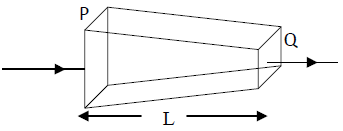
Options:
A. Net charge per unit volume near P is more than net charge per unit volume near Q.
B. Net charge per unit volume near Q is less than net charge per unit volume
C. Current per unit area near P is more than current per unit area near Q.
D. Current per unit area near P is less than current per unit area near Q.
NSEJS 2016-17 Question Paper: Ques No 6
The number of natural numbers n <= 30 for which

is a prime number is
Options:
A. 3
B. 0
C. 9
D. 2
NSEJS 2016-17 Question Paper: Ques No 7
Rhodoferax fermentans is a species of photosynthetic bacteria. From your knowledge about bacteria in general, identify the components that CANNOT be present in this organism
Options:
A. Chloroplasts
B. ATP
C. Ribosomes
D. Cell wall
NSEJS 2016-17 Question Paper: Ques No 8
If atmospheric humidity decreases, transpiration rate
Options:
A. Decreases because the concentration gradient between the mesophyll and the atmosphere decreases.
B. Stays the same because active transport does not depend on humidity
C. increases because of the higher concentration gradient between the air spaces of the mesophyll and the atmosphere
D. Decreases because the concentration of water vapour decreases
NSEJS 2016-17 Question Paper: Ques No 9
Vessels A and B are made of conducting material. Both contain water. Vessel A floats in B. Vessel B is now heated at a uniform rate, then
Options:
A. Water in A boils first.
B. Water in A boils some time after water in B starts boiling.
C. Water in both A and B start boiling simultaneously
D. Water in A does not boil
NSEJS 2016-17 Question Paper: Ques No 10
The number of squares formed by 5 vertical and 4 horizontal lines (all are equispaced) is
Options:
A. 60
B. 20
C. 40
D. 46
NSEJS 2016-17 Question Paper: Ques No 11
If 0.50 mole of a monovalent metal (M+1) halide is mixed with 0.2 mole of a divalent metal (L+2) phosphate, the maximum number of moles of M3PO4 that can be formed is
Options:
A. 0.25
B. 0.30
C. 0.16
D. 0.20
NSEJS 2016-17 Question Paper: Ques No 12
Every major city in India has a pollution control board to monitor air and water pollution. The following data is from three different localities in Bangalore city from the year 2015.
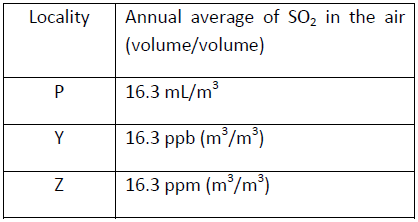
ppb stands for parts per billion and ppm stands for parts per million. These are different units to express concentration. They are very similar to percentage (which is actually parts per hundred).
Based on the above data, which place will you choose to live in?
Options:
A. All localities are equally polluted, so I have no preference
B. P is the more polluted than Y and Z, hence I will live in either Y or Z.
C. Locality Y is least polluted, hence I will live in Y.
D. Z and Y are more polluted than P, hence I will live in P.
NSEJS 2016-2017 Question Paper: Ques No 13
A body thrown vertically up reaches a maximum height and returns back. Its acceleration is
Options:
A. Downward during both ascent and descent.
B. Downward at all positions except at the highest point, where it is zero
C. Upward during both ascent and descent.
D. Downward during ascent and upward during descent
NSEJS 2016-2017 Question Paper: Ques No 14
The number of integers a, b, c for which a2 + b2 – 8c = 3 is
Options:
A. 2
B. Infinite
C. 0
D. 4
NSEJS 2016-2017 Question Paper: Ques No 15
Which of the following is NOT produced by the endoplasmic reticulum?
Options:
A. Lipids
B. Proteins
C. Monosaccharides
D. Hormones
NSEJS 2016-2017 Question Paper: Ques No 16
Vaccines prevent infections by pathogens by
Options:
A. Presenting the body’s immune system with antigens in a controlled manner, so that it is prepared to counter the pathogen producing it when it attempts to infect the body
B. Affecting the reproductive cycle of the invading pathogen
C. Binding to antigens on the surface of the pathogen and inactivating it
D. Affecting the metabolic pathways of the pathogen
NSEJS 2016-2017 Question Paper: Ques No 17
Velocity of a particle moving along a straight line varies with time as shown in the adjacent figure. Net forces acting on the particle are F1, F2, F3, F4 and F5 in the intervals OA, AB, BC, CD and DE respectively. Identify the correct statement
Options:
A. F5 increases with time.
B. F1 is initially positive and then becomes negative
C. F1 and F2 are in opposite directions
D. F3 is negative.
For full paper of NSEJS 2016-17 Question Paper (Paper Code JS530), Click Here
For NSEJS 2016-17 Question Paper with Answer Keys & Solutions (Paper Code JS531), Click Here
| NSEJS | |||||||
|---|---|---|---|---|---|---|---|
| Previous Year Question Papers | |||||||
| 2008-09 | 2009-10 | 2010-11 | 2011-12 | 2012-13 | |||
| 2013-14 | 2014-15 | 2015-16 | 2016-17 | 2017-18 | |||
| 2018-19 | 2019-20 | ||||||
NSEJS Maths Questions Bank EBook
Get NSEJS 2008 to 2018 Maths Questions Bank with Solutions. To get this combo ebook, click below RED button.

